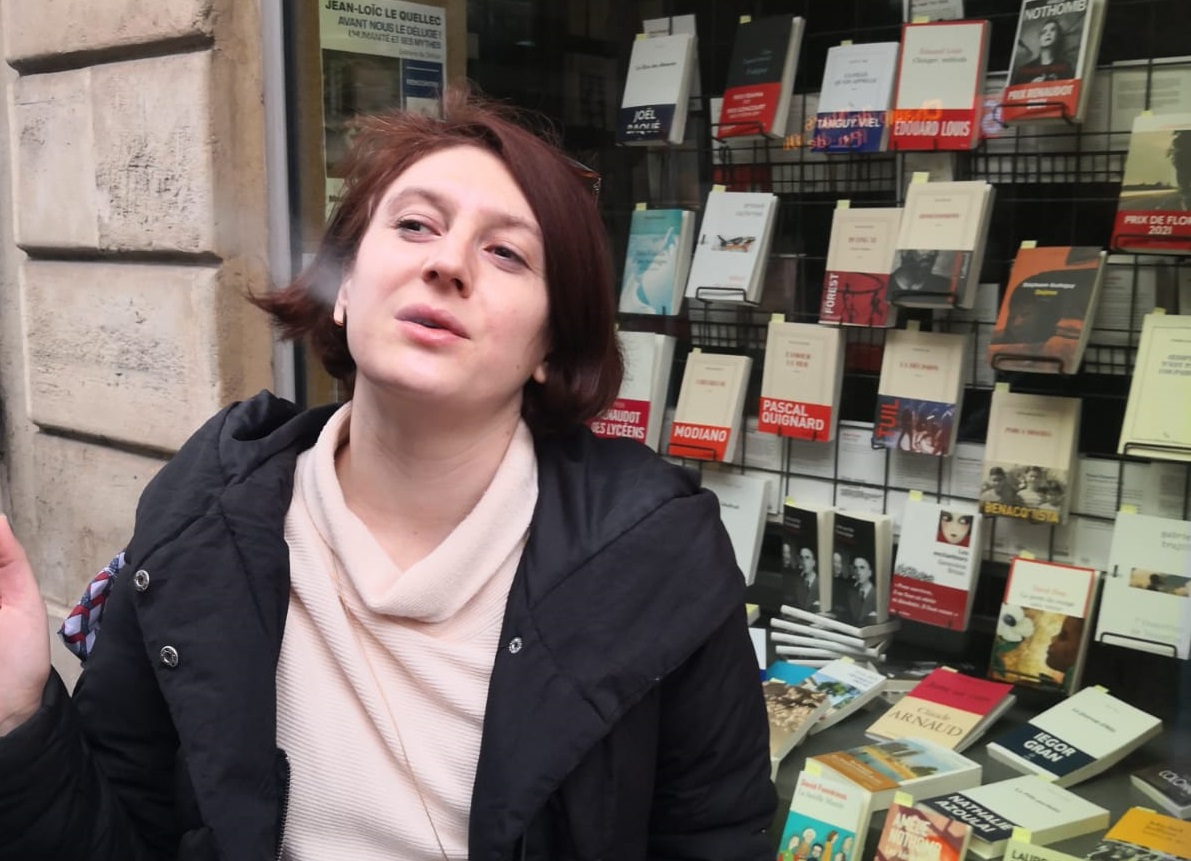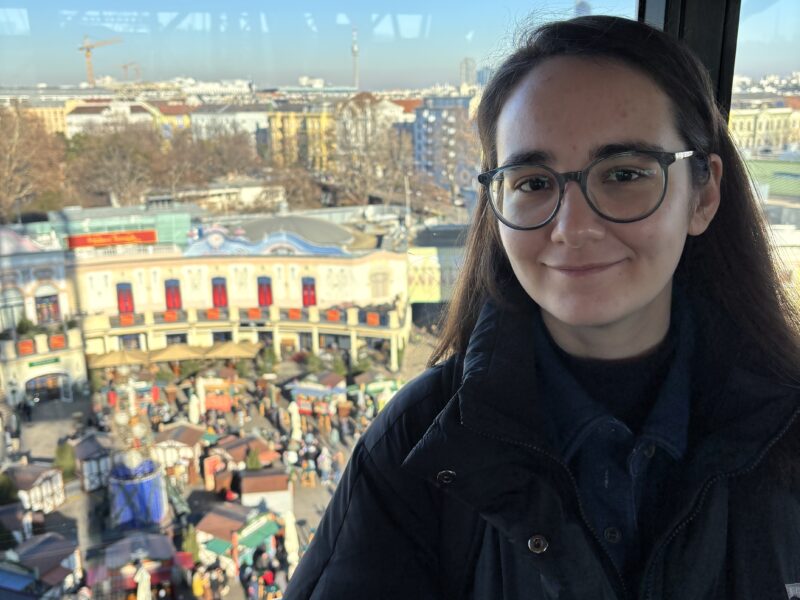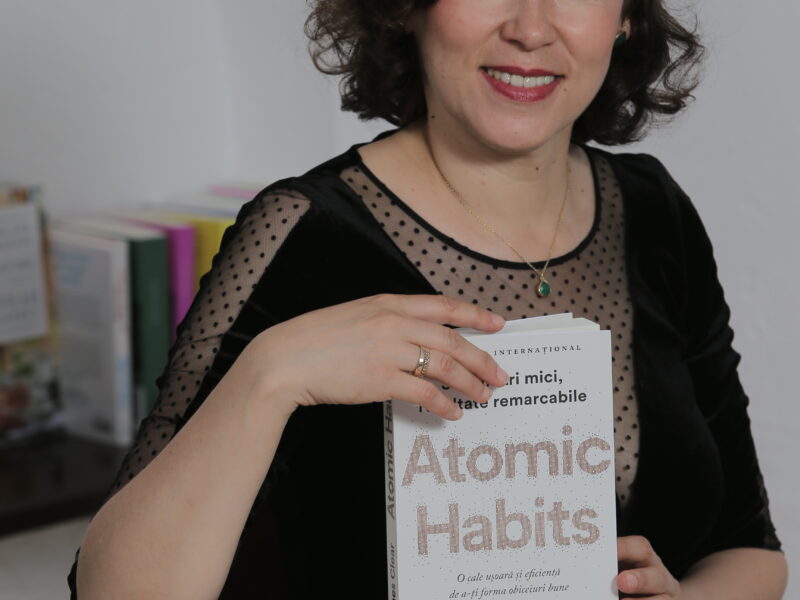Alexandra Cozmolici is an English and French translator, and the authors she translated include Maryse Condé, Vanessa Springora, Delphine de Vigan, Sophie Kinsella, Anna Gavalda. She worked as an editor at the Polirom Publishing House, and, before that, as a PR consultant at Casa de Pariuri Literare. She graduated from the Faculty of Letters (the University of Bucharest), where she also attended the Master’s for the Theory and Practice of Editing. Now, she is a manager in a multinational company, but she continues to nourish her passion for books and reading.
You worked as a foreign literature copy editor at Polirom for a few years. How did you come to work at Polirom?
The short story: I came to work at Polirom because of a fortunate set of circumstances.
The long story: I wanted to work in the editorial domain, just like any Letters alumnus. And I kept playing the field. As a student, I collaborated with Casa de Pariuri Literare as junior PR and, even though it was a much needed experience, I discovered that interacting with the people behind the authors and all the advertising strategies typical for the editorial domain were not all that delightful for me. I believe I figured out that I wanted to be on the other side of the desk when I was asked to collect a manuscript belonging to Angela Marinescu, which later became Intimitate/Intimacy and was published at Charmides. After the experience from Casa de Pariuri Literare, I was also close to finishing my undergraduate studies and I chose to pursue a Master’s degree in the Theory and Practice of Editing, in order to “learn the craft”, before dipping my toe into the editorial sea again, but it wasn’t meant to be. So I went into the corporate domain, just like any other graduate of foreign languages and something else.
And, just when I thought that I would be there for the rest of my days, an unhoped for proposal from Polirom came through, through my most dear professor from the Letters faculty, Magda Răduță. I was her student and I nagged her with my bachelor thesis project, which was actually coordinated by somebody else, but which she fully supported, that I must have left a mark on her. For this proposal and for this chance I will always be grateful to her.
What was it like collaborating with the translators of the books you copy edited? Did you send them your suggestions? Do you have any stories worth sharing?
For most of the collaborations, I imagine that things happened just like they happen in all the publishing houses which respect their authors and their translators. I revised the translation, with the original alongside it, I sent my suggestions to the translators, we negotiated where we thought that my solution would be better suited for the book, we compromised regarding a certain phrase, in order to keep another one. If any revelation happened during the paginated revision, the translator was consulted at the last minute and we tried to make the best decision.
The truly spicy episodes stay within the walls of the publishing house, and it’s better this way, because the arguments between translators and editors are well known, and both sides are willing to engage in bloody battles over modifications in the text, which are forgotten after the release of the book.
Many such discussions were also very discrete, and at the end of a volume which is challenging even for the best translators, and for the best editors, the fact that you don’t have any funny stories is one of the best rewards. Besides receiving the physical copy of the book on your desk some time after the work is finished.
As you know, the Biblioteca Polirom collection hosts on its shelves some of the most read authors from the universal literature and working on the books of the most renowned authors or of the most powerful voices in contemporary literature is a story in itself.
But there are things which can better emphasize this experience.
For instance, when we received the columns for the novel The Children of the Ghetto. My name is Adamby Elias Khoury, translated from Arabic by Nicolae Dobrișan, a novel whose main character is of Palestinian origin and who is trying to map the psychological traumas caused by the Israeli occupation, but is working in a restaurant where he prepares falafels and he begins to write a romance book whose protagonist is Waddah al-Yaman, an Arabic poet from ancient times; a real tour de force regarding the cultural references, so little known in our cultural space, but also regarding the thematic challenge it entails; initially, we did not receive the whole book, because it was being collected. The revered translator wrote the translation by hand, and, from what I gathered from the editor-in-chief at that time, Alin Croitoru, it was the same for each of the novels he turned in at the publishing house. But all the work behind the translations, which happened in a classical rhythm, which we can no longer imagine, without online dictionaries, without google books and feeble searches in virtual encyclopaedias, was impeccable. It was a lot of work, just like it is with any book, but besides this difference in the translation techniques used nowadays, I felt an immense appreciation for a person who did not change his approach once technology took over.
Another story to tell would be that, pressed by the imperatives of the moment (the announcement of the Nobel Prize winner was close, and our author had been a favourite on the popular lists for some time), I came to edit Petals of Bloodby Ngũgĩ wa Thiong`o, together with my best friend, Alina Aviana, who was also a copy editor at Polirom at that time. And we communicated the changes we made to each other while we were working on the text, from one end of the office to the other, and we also had to be synchronized. The fact that at the end of the almost 500 pages we were together in the editorial box on the last page of the novel became more important than having a story to tell about how we worked on the book of a Nobel Prize winner, if the author had actually won the Nobel Prize.
And I believe the most beautiful moments at the editorial board were those in which we cross-edited each other’s translations. With the same respect, accuracy and even fear of being caught with a mistake when you edit the translation of an editor. And this criss-cross between our roles went so far that, after I edited Dan Croitoru ’s translation of Ian McEwan’s Machines Like Me, and when he finished editing Bogdan-Alexandru Stănescu’s translation of Daniel Mendelsohn’s An Odissey, the copy of An Odissey which I received was tied, by chance, to a few chapters from Machines Like Me, y compris including the title page and the editorial box, as a sort of revenge of the people from the typography, whom we probably drove crazy. It is a copy which has a dear place in my bookshelf.
Besides your work as a copy editor, which you no longer do, you translate from English and French. How did you debut as a translator?
My first tangible proposal came from Polirom. Anna Gavalda, a writer whose novels were mostly translated by my colleague, Ada Tanasă, had also written a children’s book. And I received the proposal to translate 35 Kilograms of Hope.
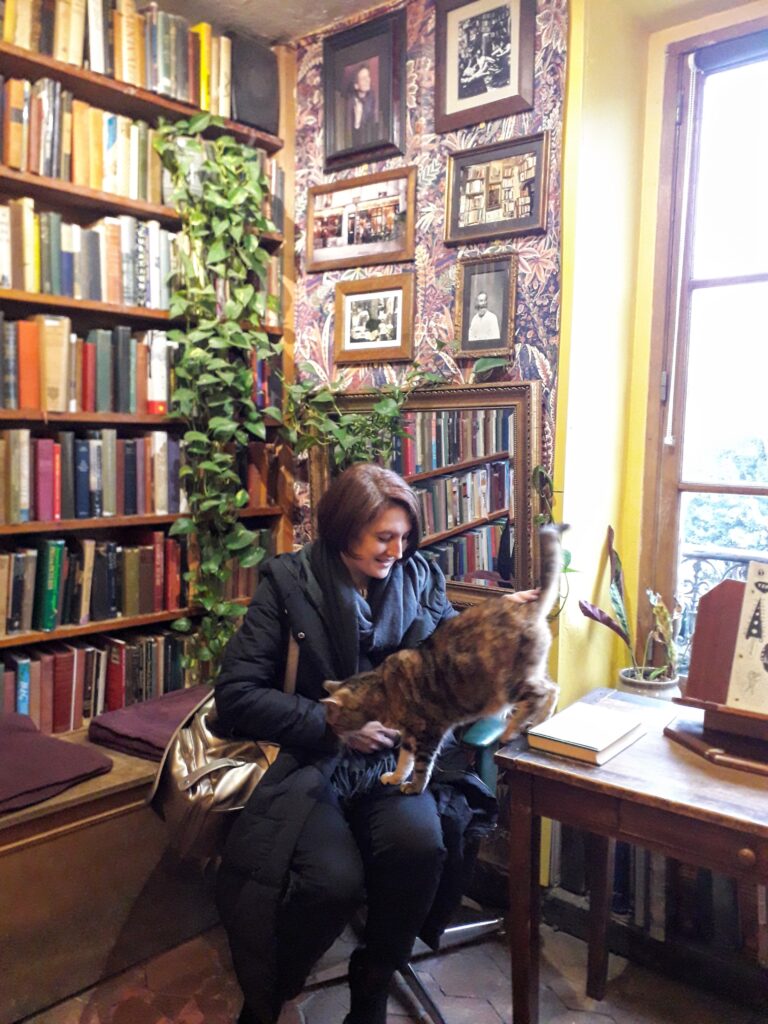
Do you have any habits or procedures you follow when you translate a book?
I have a sort of habit when I begin translating. Seeing as the rhythm of the world we live in does not allow me to retreat in any Val-d’Isère chalet, during springtime, when all the tourists have left, in order to have some peace and quiet, and that all the books have been translated after my working hours, in weekends, or during my holiday leave which I took in order to finish them on time, I like to try and dedicate a whole weekend to the first pages of the book, during which I sit with the book, I dive deep into its universe until I feel like I am walking through it like I would be walking through a house where I lived for many years and I can find my way in it, even in the dark.
As for the procedures, I would not really refer to them as that, I work with those in another field. They are more like good practices. When I work on children’s books, for instance, I try to pay attention to the age of those to whom the book is addressed and to figure out how children talk among themselves nowadays, in order for the text not to seem outdated.
For the other books, I do research regarding the areas which the text references as much as I can and I search for phrases in order to make sure that I do not become a source of involuntary expression. For instance, this is how I became an “expert” in cadastre and geology after translating Michel Bussi’s Sang Famille.
Which of the books you translated brought you the greatest joys and which tested your patience the most?
I do not think of them this way. All the books I worked on, whether I translated them, copy edited them or simply made a few corrections on, brought me joy. They represent a panoply of reading experiences and they were all challenging. None of them tested my patience, I am on their side, I don’t work with stubbornness.
Given that you mostly translate for Polirom, can you choose the books you will work with, or are they assigned to you by the publishing house?
I will probably disappoint you, but this is not how the editorial domain works. The publishing house decides upon its portfolio, buys the publishing rights and chooses the best translators (or those who are willing) to work on the translation of the text. I do not believe that, at this point, there is any publishing house which comes to the editor with a folder filled with proposals of everything that is part of the editorial plan (which, by the way, is confidential until the titles are released on the market) and lets the translator choose whatever their heart desires. This is a myth of the editorial world. I have heard it frequently and I have always wondered who the person who started the rumour was. The translator is a being who is more humble than that. His freedom is limited to refusing because of lack of time, of competency or because of their disinterest regarding the author. Nobody dictates anything in this little corner. It is a partnership between the publishing house and its collaborators. The editorial director and, eventually, the editor-in-chief have enough experience in order to match the right authors with the right translators. And it’s good that things happen in this way.
Given that you also worked as a copy editor, you are familiar with the expectations regarding translations. How is your relationship with the copy editors of the books translated by you?
I was happy to work with understanding copy editors, who were very dedicated to the text, as it should always happen.
On my part, I try to make them work as little as possible, trying to leave the text as clean as possible, rereading everything after the translation is finished and coming back even three times to the most difficult parts. But, like any human being, I am not without fault and I miss sentences, phrases, I even make beginner’s mistakes, so I try to leave my ego or any trace of stubbornness aside and to calmly revise all the suggestions made by the copy editor. I have devised a true system with the copy editor who helped me with most of my translations, Sînziana Cotoară, and who went above and beyond in order to support me in finding the best solutions for the books on which we worked together. I am grateful to her for the accuracy with which she copy edited each and every book.
You also translated children’s books by Sophie Kinsella and Anna Gavalda. Does the translation process differ for those books?
Children’s books require a completely different approach, if you ask me. That depends on whether or not they have entered the history of literature as children’s books, but they hide a clin d’oeil (wink wink) which is rather aimed at adults and, in time, they become a universal literature gem, such as, for instance, Selma Lagerlöf’s The Wonderful Adventure of Nils Holgersson , my favourite book as a child.
Other than that, the books which were specifically written for children require the translator to carefully temper his instincts and to be more careful regarding the age of the child, the limits of their language and their universe, the verbal forms which sometimes have to be kept simple, the semantic ambiguities, the archaisms which are perhaps closer to the original, but which, nowadays, are not accessible to those for whom the text is written. This area of children’s literature has been starting to gain more visibility on our market, and even Polirom has a Junior collection which is very dear to me.

Do you also get involved in the process of the book releases after they come from the printing house? Do you follow their evolution on the market?
I have participated in two discussions about the books I translated through the goodwill of Polirom and Cărturești. I, Titubaba, Black Witch of Salem by Maryse Condé and Consent by Vanessa Springora. And, of course, I follow the chronicles and the reviews. Otherwise, for me, and I believe only the authors feel this even more intensely, the greatest joy comes when the books are read. When I can recommend, give one of the books I worked on as a gift or whenever I simply see it one someone’s TBR.
You completed the Master’s degree in the Theory and Practice of Editing at the Faculty of Letters (the University of Bucharest). To what extent were the courses there helpful to your, regarding your activity at the publishing house?
Let’s say that it’s a start. Just like any institutionalized form of education, the purpose of this master’s programme was to create a framework for you, for the editorial world. To familiarize you with the existing tools and with the workings of the process which transforms an idea into a manuscript and then into the physical object which ends up in the hands of the readers throughout history, and with the way in which that process takes place now. It works up an appetite. However, given that within the master’s programme, the lectures are held by the professors of the Faculty of Letters (from the University of Bucharest), some of which are active on the editorial market, rather than by actual professionals, things often remain very abstract for some of the objectives in the curriculum. Such as, for instance, the editorial marketing part, the typesetting part, or the layout part. And they become even more ineffable when we move on to electronic books and electronic formats. Perhaps this could be very lucrative, if a Philology graduate could gain experience with another kind of software than the humble text editor on their way to the book industry. Sometimes, the fact that the people in charge are not literate, or that those who are literate are at a loss when they are faced with challenges other than the lexical ones, which determine a text, blocks the mechanism a little.
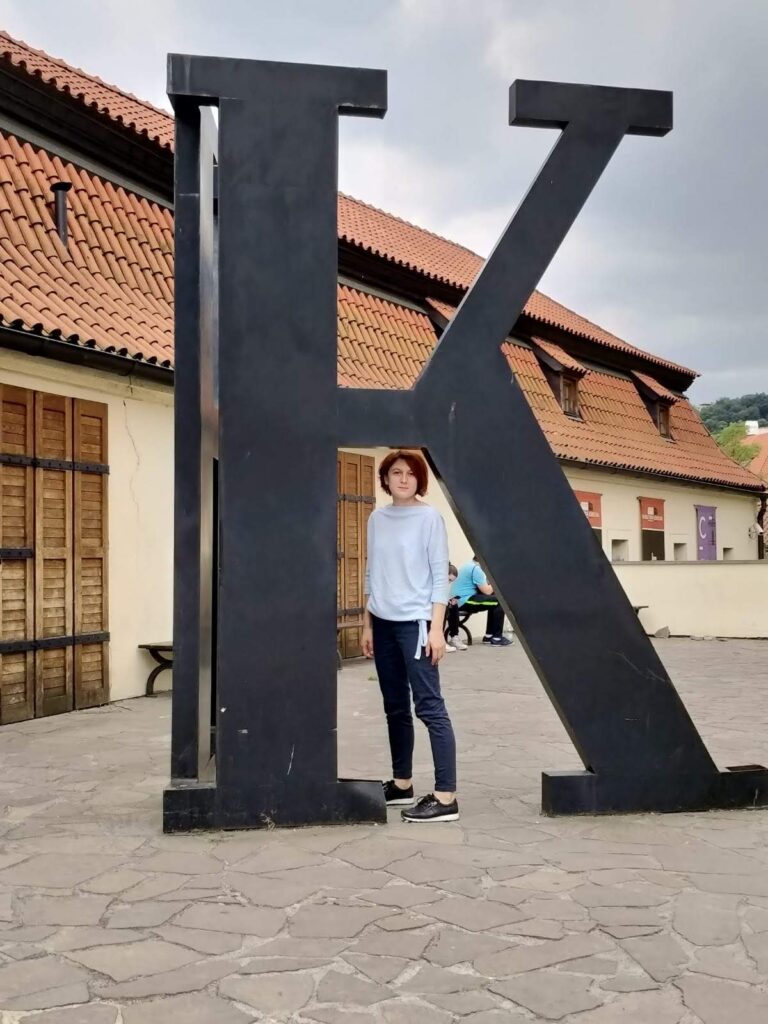
Can the copy editor and translator crafts be taught, or are they stolen? How did you go about your apprenticeship?
Both. Copy editors and translators are, before everything else, voracious readers and they’re also very knowledgeable regarding the Romanian language. Specialists, it’s true, in as many foreign languages as possible (preferably for the copy editor) and able to come as close to native speakers as possible (in the case of the translator, of course). But the quality of a translation is given by the naturalness and the quality of expression in Romanian. So the dictionary, the DOOM, and that reflex to check even the words and phrases you think you know are your best friends in this craft. There are things you do not acquire until you do them. And, most importantly, there are things you won’t learn until you make a mistake at least once, and I believe this is where the stealing part comes into play. Because in the editorial office the other members of the team, with more experience, can guide you. Be it directly, or through their own way of doing the work (this means reading the books translated by them with a careful eye, especially to the original, where this is possible).
What are your greatest editorial satisfactions up until now?
In the chapter “Ceci tuera cela” from Notre-Dame de Paris, Victor Hugo proclaims the victory of writing, released with the help of a printer, in front of the monument: “Le livre de pierre, si solide et si durable, allait faire place au livre de papier, plus solide et plus durable encore.“ (“The stone book, so solid and durable, will make room for the paper book, more solid and more durable.”)
Some of them materialized in the shape of a few stacks of books I worked on, either copy edited or translated by me. It was something I had always wanted to do and I consider myself lucky for having been able to produce some replicas in my native language of the paper cathedrals built by writers.
Why didn’t you continue to work for Polirom?
Before going to the Faculty of Letters, I graduated from a math-informatics intensive programme in high school, I even have a certificate as a technician in the technology of information, I believe that’s how it’s called. And, just like in the fairy-tale with the emperor’s son who was in love with the daughter of a craftsman, who wouldn’t accept to give him his daughter’s hand in marriage until he taught him how to make a wicker basket, because his status as a prince would maybe not last forever, I also studied something else before stepping into the literary world. Not out of mistrust, but out of lucid precaution. Back in the day, there was this image of the literate who was either bohemian (defined by the precariousness of their means), or rich (defined by the fact that they were not trying to increase the family’s fortune through his job). And, even though the political correctness brigade will come at me for saying this, things have not fundamentally changed when it comes to this aspect. The people I worked with are professionals in the book industry and I would never label them in any way, least of all call them bohemian. However, when the precariousness of your means hinders you from satisfying some needs other than the spiritual ones, all you can do is change your approach a little. I’m not saying anything new, this is the secret of Polichinelle.
The Polirom publishing house did not make any promises it was not able to keep, quite the opposite. I chose to divert from the course a little, out of personal reasons. Otherwise keeping all the connections intact.
I steered towards a completely new field, which tests my programming, maths and French knowledge. I learned some accounting and management in order to make things go more smoothly, so now I am a specialist in the accounting and legislation of salaries for an American company which operates with French partners. I have recently got a promotion and I coordinate a team of technicians who deal with this.
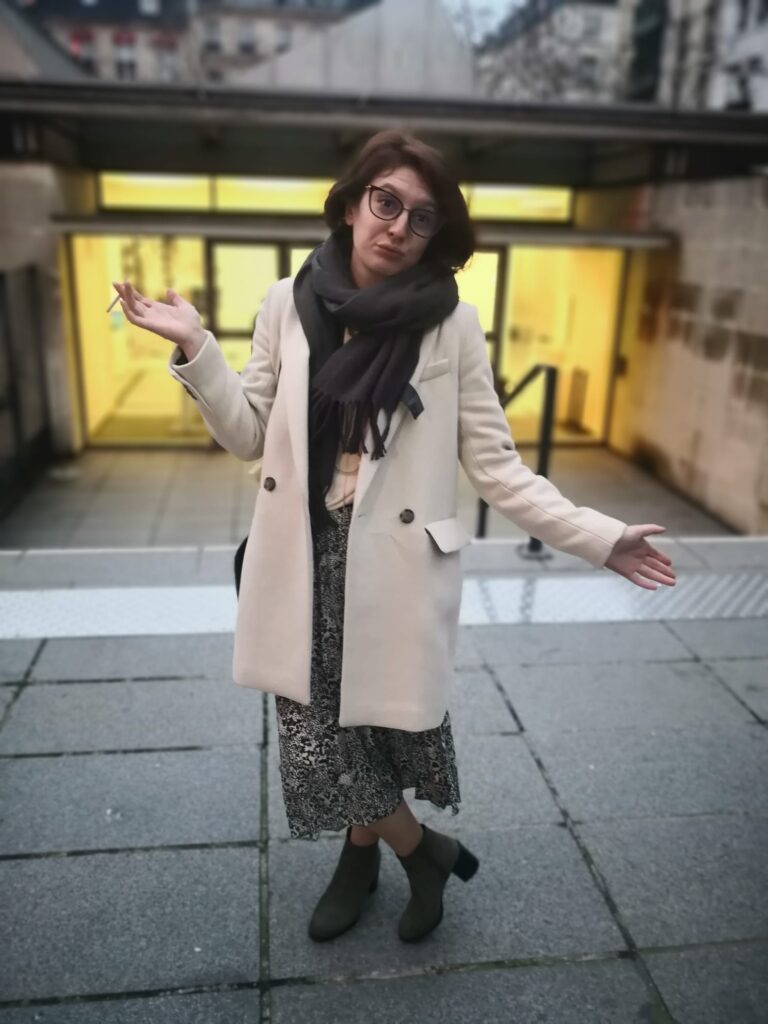
Now that you are outside the field, what are the weak links of the Romanian editorial domain?
I don’t have the importance or the arrogance to give an opinion of the editorial domain, be it about its strong or weak links. In principle, I consider that this domain needs a more ample discussion than a SWOT file in order to make relevant and meaningful points. However, for the sake of interview conventions, I’ll join in on the discussion and answer your question.
My opinion did not change once I left the publishing house and it was not different before I had the opportunity of working there.
In the most copious satire of universal literature, in the sixteenth century, Rabelais opened the gates of a new kind of Humanism in France and raged against the scholars of the Dark Age. But neither Rabelais, nor the form of education he was standing up against, was ordinary. Alongside Erasmus of Rotterdam, Henri Estienne, Guillaume Budé, Giovanni Pico della Mirandola and Marsilio Ficino he initiated in Europe what Bachelard later called “the epistemological rift”, and the movement later received the name of Humanism.
On the other hand, in the Romanian cultural space, two centuries later, at the end of the seventeenth century, the Biblewas just being released in Bucharest, the first translation of the Bible in Romanian, written with Cyrillic characters.
You simply cannot retrieve the distance left by the rift created between the Western culture and our culture, regardless of the material means, or the human capital.
On the contrary, you can only be pleased, if you are capable of a bit of lucidity, enjoy the fact that all the editorial releases from all around the world nowadays appear in sync with the Romanian translations. That Romanian authors participate in international festivals and even receive awards. That the Romanian publishing houses have portfolios at the most relevant international book fairs. That such book fairs exist in our country. That we have literature festivals where foreign authors are not only present, but in which they wish to participate. That universal literature collections exist in Romania, in which foreign authors wish to appear.
The problems of the Romanian book market, and of the industry in general, have nothing to do with the will or the capacity of the editors or the authors, in my humble opinion. They are generated by the lack of (tradition and application of) some cultural policies. Out of the lack of relevance of the institutions which should devise them and consistently put them into practice. Out of the lack of encouragement regarding reading and of support programmes for those who have difficulty in obtaining these products. And then the editors could do the fine tuning. We have reached a point where books and cultural products are still considered luxury items. The statistics which show the percent of readers in Romania and all the ironies on the social platforms regarding how we are not well-read enough, how we don’t go to theatre shows, or to classical music concerts seem to ignore the precarious situation of those people from most regions in the country and of the people living there, who place buying books (or any kind of cultural product) in the sphere of irrelevance. You cannot choose between eating and reading a book. It’s an awful kind of choice.
For my current job, I’ve had to deal with the legislation regarding the payment of artists in France. Rarely within the editorial domain, but I still have time to do my research. The whole artistic sector is under the hat of Spectacle and intermittent du spectacle. There are cultural and fiscal politics which regulate the payment and the support of the artists by the state, as well as of the technicians of performance art, and of the employers, whether they are private or state institutions. Which allows people who choose to do this in life to survive at least, if not to live comfortably.
We are far from being able to solve the problem of the book industry without institutional support. We are very good at being clowns.
You dealt with foreign literature at work, but in your free time, you are also a reader of contemporary Romanian literature. What are your most recent discoveries in terms of Romanian authors?
I don’t know if I’d call them discoveries. There are a few Romanian authors whose editorial releases I follow and anticipate impatiently. Most of them are poets or authors who also write poetry. I was very pleased because in the past two years, new books penned by Dan Sociu, Bogdan-Alexandru Stănescu, Svetlana Cârstean, Miruna Vlada were published. I was also delighted to read the new poetry volume by Ruxandra Novac, Alwarda. And I can’t wait to read Bogdan-Alexandru Stănescu’s new novel, Abraxas.
[The photos are part of Alexandra's archive.] [Translated into English by Irina-Adelina Găinușă.]

